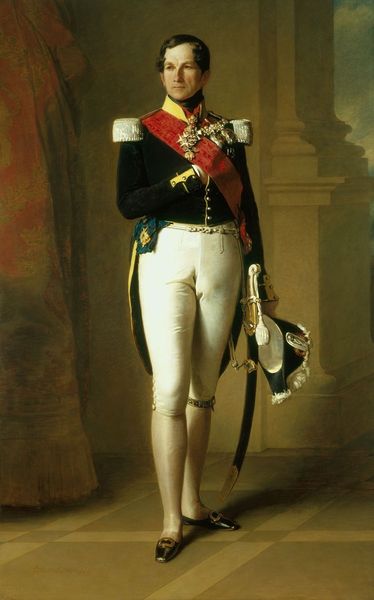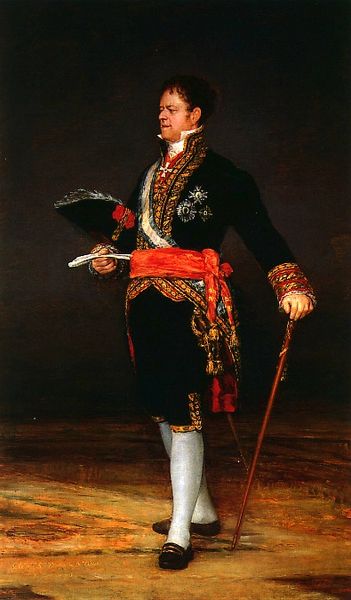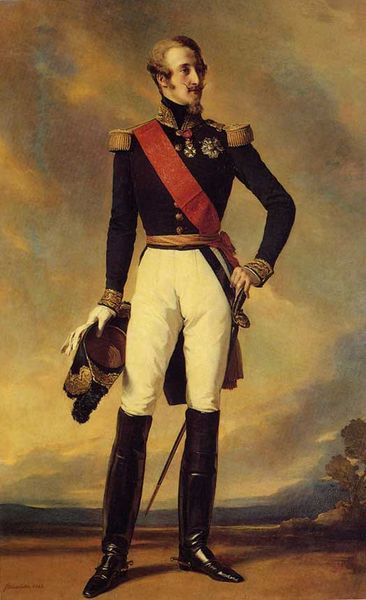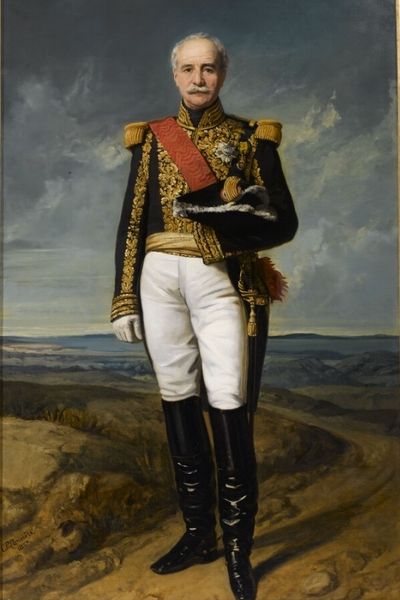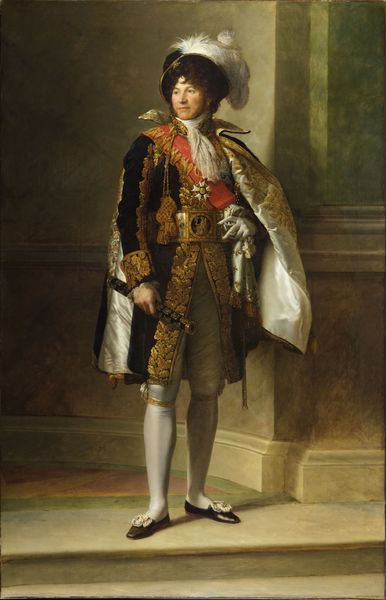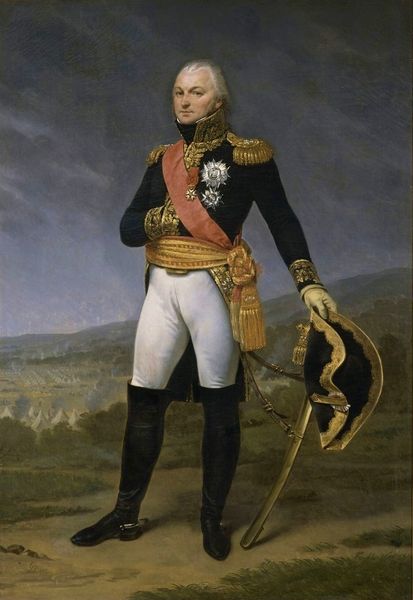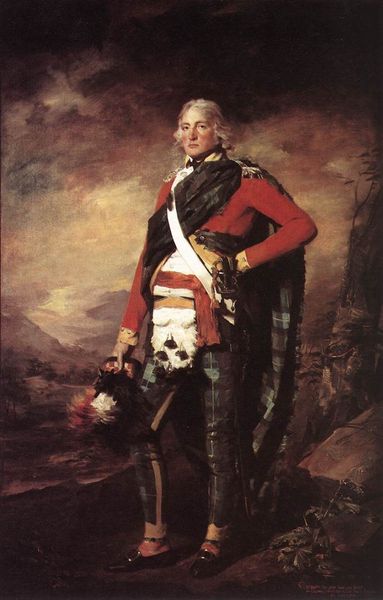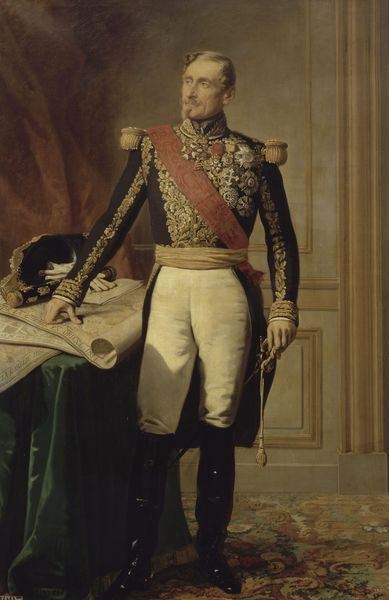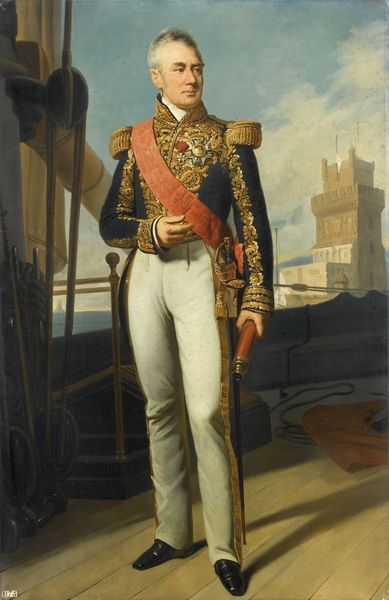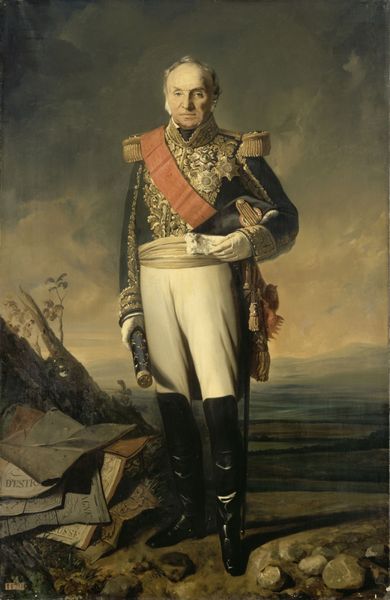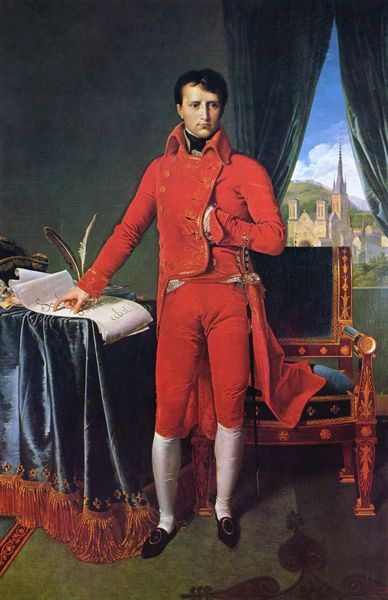
painting, oil-paint
#
portrait
#
neoclacissism
#
painting
#
oil-paint
#
historical fashion
#
male-portraits
#
costume
#
history-painting
#
academic-art
Copyright: Public domain
Editor: This is Antoine-Jean Gros's "First Consul Bonaparte," painted in 1802. I'm struck by the opulence, especially in the fabrics of his clothing. What can you tell me about this painting? Curator: This painting provides a fascinating lens through which to examine early 19th-century French society. Let's consider the production of the materials themselves. The pigments for the oil paint – where were they sourced, and how were they processed? That red coat, undoubtedly expensive and symbolic of power – who were the weavers, dyers, and tailors involved in its creation? Their labor is inextricably linked to Bonaparte's image. Editor: That's a perspective I hadn't considered. I was just thinking about how grand it looks. Curator: Exactly! The 'grand' appearance masks a complex web of production and consumption. Think about the documents on the table, the ink and paper. All of this speaks to a vast network that supported Bonaparte's regime and image. And that image, replicated and disseminated, served to solidify his power, fueled by material resources. The art world at that moment relied upon strict guidelines from the Salon - that imposed a regime of taste. Editor: So, it's not just about Bonaparte's individual power, but the entire system that enabled it? Curator: Precisely. By focusing on the material reality behind the image, we see how art functioned as a tool of social and political control. How the laboring hands producing luxury items reinforced existing hierarchies. Editor: I see. I'll definitely look at art differently now, considering the hidden layers of labor and material production. Curator: A portrait becomes much more than a simple depiction when you investigate what it's materially made of, and at what expense! It really underlines the connection of economics and cultural output at the time.
Comments
No comments
Be the first to comment and join the conversation on the ultimate creative platform.
